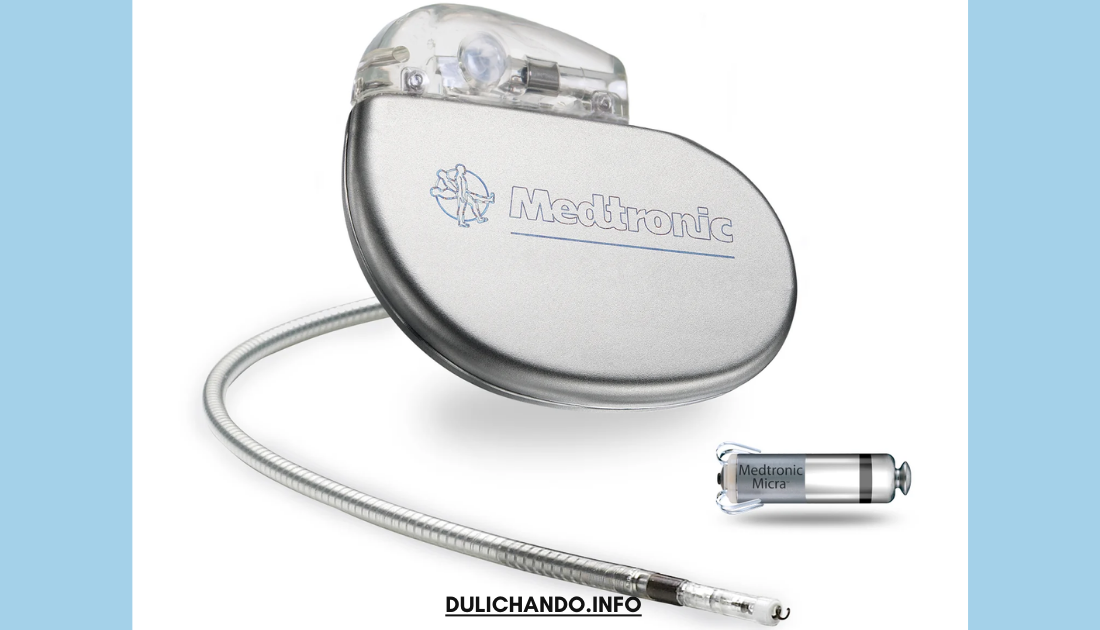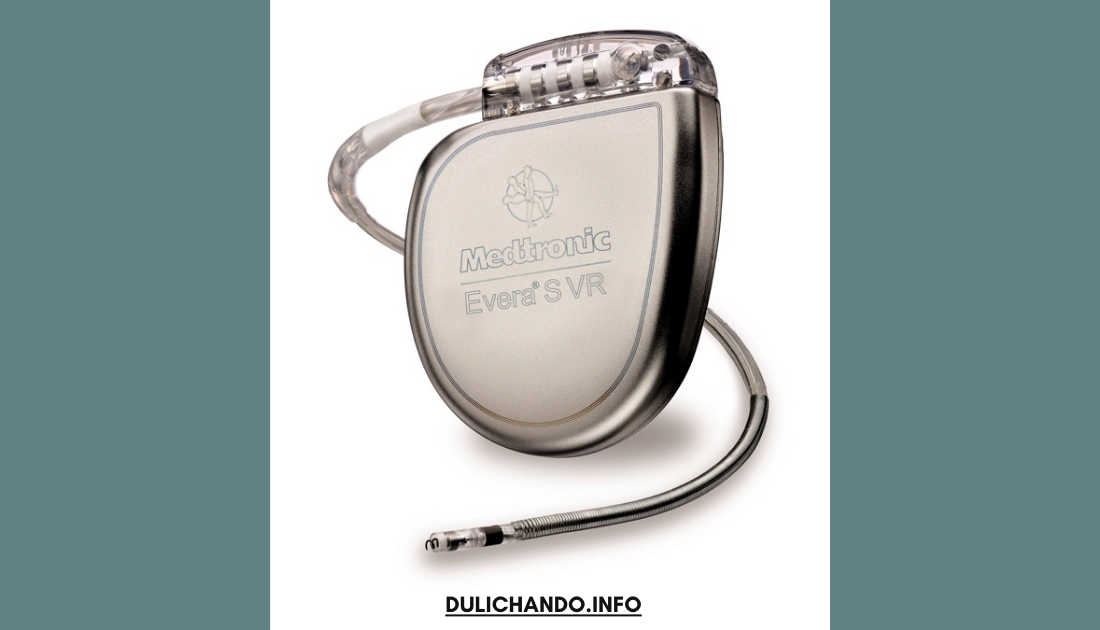In the field of cardiac care, Medtronic pacemakers are among the most advanced and reliable devices available. For those with heart rhythm issues, such as bradycardia, Medtronic pacemakers offer life-changing support by regulating heartbeat and improving quality of life. With an array of features tailored to meet diverse needs, these pacemakers cater to different patient lifestyles and health conditions. This guide will provide an in-depth look at Medtronic pacemakers, covering their types, benefits, features, and what makes them a top choice for those needing cardiac rhythm management.
1. Understanding Medtronic Pacemakers
Medtronic, a global leader in medical technology, has been at the forefront of cardiac device innovation for decades. Their pacemakers are designed to treat bradycardia, a condition where the heart beats too slowly. By delivering small electrical impulses to the heart, Medtronic pacemakers help maintain a steady rhythm, ensuring the body receives enough oxygen-rich blood. Unlike older pacemaker models, which often had limited features, Medtronic’s latest devices come equipped with cutting-edge technology that enhances both functionality and convenience for patients.
One of the primary goals of Medtronic pacemakers is to provide a device that seamlessly integrates into a patient’s life. With options like leadless pacemakers and MRI-compatible models, Medtronic has set new standards in the pacemaker industry. But before choosing a Medtronic pacemaker, it’s essential to understand the different types available and which might be the best fit for individual needs.
2. Types of Medtronic Pacemakers
Medtronic offers various pacemaker models, each designed for specific needs and medical requirements. Here are some of the most popular options:
a. Micra™ Transcatheter Pacing System
The Micra™ pacemaker is the world’s smallest leadless pacemaker. Unlike traditional models, it’s implanted directly into the heart, eliminating the need for a chest incision or leads. This leadless design reduces the risk of infections and other complications associated with leads. The Micra pacemaker is minimally invasive and typically requires less recovery time, making it an ideal choice for many patients. Despite its small size, it provides the same functionality as larger pacemakers, delivering precise pacing support.
b. Azure™ Pacemaker with BlueSync Technology
The Azure™ pacemaker is equipped with Medtronic’s BlueSync technology, which enables wireless communication with a mobile app. Through the MyCareLink Heart™ app, patients can remotely monitor their pacemaker, share data with healthcare providers, and receive alerts about their device status. Additionally, the Azure pacemaker is MRI-compatible, meaning patients with this device can safely undergo MRI scans under certain conditions, expanding their options for diagnostic imaging.
c. Advisa MRI™ SureScan™ Pacemaker
The Advisa MRI™ SureScan™ pacemaker is designed specifically for patients who need regular MRI scans. It offers advanced pacing features and is available in both single and dual-chamber options. This device has SureScan technology, allowing patients to safely undergo MRIs when required, enhancing their ability to receive necessary medical evaluations without compromising pacemaker function. This pacemaker is a preferred choice for patients with complex health needs requiring frequent imaging.
d. Adapta™ Pacemaker
The Adapta™ pacemaker is an adaptable device that adjusts its pacing rate based on the body’s physiological needs. It senses physical activity and changes the heart rate accordingly, which is ideal for patients with varied activity levels. This feature makes the Adapta pacemaker highly versatile, providing consistent support whether the patient is at rest or active.
3. Key Features of Medtronic Pacemakers
Medtronic pacemakers come equipped with advanced features that contribute to their effectiveness and patient convenience. Here’s a look at some of the standout features:
a. Leadless Design in Micra Pacemakers
One of the most innovative features of the Micra pacemaker is its leadless design. Traditional pacemakers use leads to connect the device to the heart, which can sometimes lead to complications. The Micra, however, eliminates the need for leads entirely. This unique design reduces the risk of infections and lead-related complications, providing a safer and less invasive option for patients.
b. MRI Compatibility
Many Medtronic pacemakers, including the Azure and Advisa models, are MRI-compatible. This feature allows patients to undergo MRI scans safely under specific conditions, which is crucial for those who require regular imaging for other health conditions. MRI compatibility ensures that patients do not have to sacrifice their diagnostic options because of their pacemaker.
c. Wireless Connectivity with MyCareLink Heart™ App
The Azure pacemaker offers wireless connectivity through the MyCareLink Heart™ app. Patients can use the app to monitor their device’s performance, track their heart’s activity, and share data with healthcare providers. This feature enhances patient engagement and allows for remote monitoring, improving patient outcomes and enabling faster responses to any issues that may arise with the device.
d. Long Battery Life
Medtronic pacemakers are built to last, with most models offering a battery life of up to 10 years or more, depending on usage. This longevity reduces the need for frequent replacements and provides peace of mind for patients, knowing their device will reliably support them for years to come.
4. Benefits of Medtronic Pacemakers
Medtronic pacemakers offer several advantages for patients with cardiac issues. Here are some of the primary benefits:
a. Enhanced Quality of Life
By regulating heart rhythms, Medtronic pacemakers allow patients to live fuller, more active lives. The devices help maintain a steady heart rate, reducing symptoms like dizziness, fatigue, and fainting associated with bradycardia. This improvement in daily function significantly enhances quality of life.
b. Improved Safety and Reduced Complications
The advanced design of Medtronic pacemakers, particularly the leadless Micra model, reduces the risk of common complications associated with traditional pacemakers. The minimally invasive implantation also reduces recovery time, allowing patients to return to normal activities sooner.
c. Access to MRI Scans
For patients with other medical conditions requiring MRI scans, having an MRI-compatible pacemaker like the Azure or Advisa can be life-changing. This compatibility ensures they can receive thorough medical evaluations and imaging without compromising their pacemaker’s function.
d. Remote Monitoring and Connectivity
With devices like the Azure pacemaker, patients can monitor their health from home, reducing the need for frequent doctor visits. This connectivity allows for continuous monitoring, which can catch potential issues early and provide a more personalized approach to patient care.
5. How to Choose the Right Medtronic Pacemaker
Selecting a Medtronic pacemaker should be done in consultation with a cardiologist. Factors to consider include lifestyle, health requirements, and personal preferences. Here’s a quick guide:
- Lifestyle Needs: Active individuals may benefit from pacemakers that adjust heart rate based on activity, such as the Adapta™ pacemaker.
- MRI Requirements: For those who need regular MRI scans, MRI-compatible pacemakers like the Azure or Advisa MRI are ideal options.
- Convenience: The Azure pacemaker, with wireless connectivity to the MyCareLink Heart™ app, offers patients the convenience of remote monitoring.
- Minimally Invasive Options: For patients who prefer a less invasive option, the Micra leadless pacemaker is an excellent choice.
6. Living with a Medtronic Pacemaker
Living with a Medtronic pacemaker involves regular monitoring and follow-ups to ensure the device is functioning correctly. With options for remote monitoring, many Medtronic pacemaker users can track their health from home, providing peace of mind and convenience. It’s also essential to follow specific lifestyle recommendations, such as avoiding prolonged exposure to certain electronic devices, to maintain pacemaker function.
Most patients experience improved quality of life with their Medtronic pacemaker. Routine check-ups and monitoring can help catch any potential issues early, keeping the device performing optimally. Medtronic pacemakers are built for longevity, and with proper care, they offer reliable support for many years.
Conclusion
Medtronic pacemakers are among the most advanced and trusted devices for managing bradycardia and other heart rhythm issues. With features like leadless design, MRI compatibility, and remote monitoring capabilities, Medtronic pacemakers provide patients with a safe, effective, and convenient way to improve heart health. By working closely with a healthcare provider, patients can choose the ideal Medtronic pacemaker for their needs and enjoy the benefits of a well-regulated heartbeat and a better quality of life. For anyone needing cardiac rhythm management, Medtronic pacemakers offer cutting-edge technology, comfort, and reliability.

